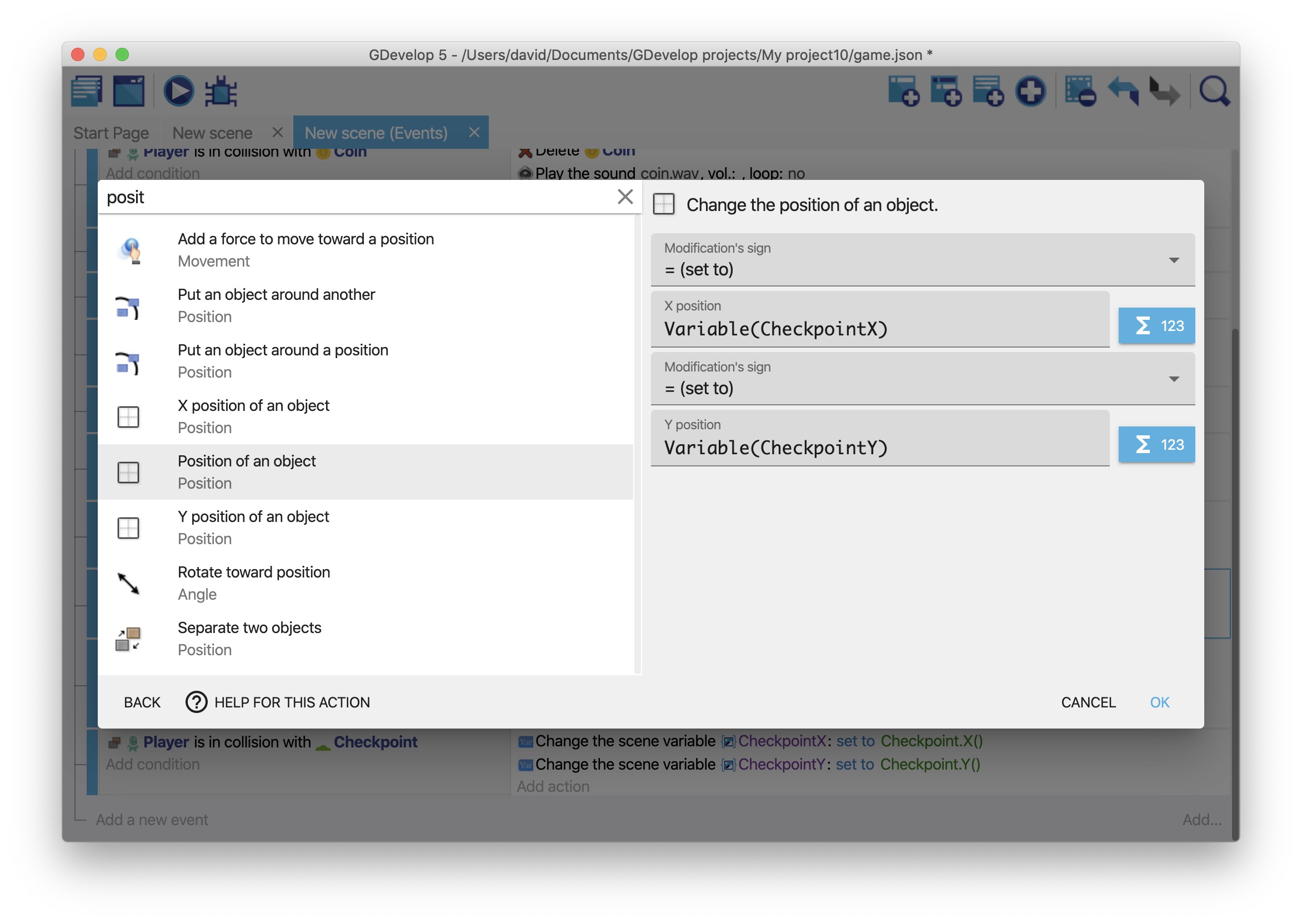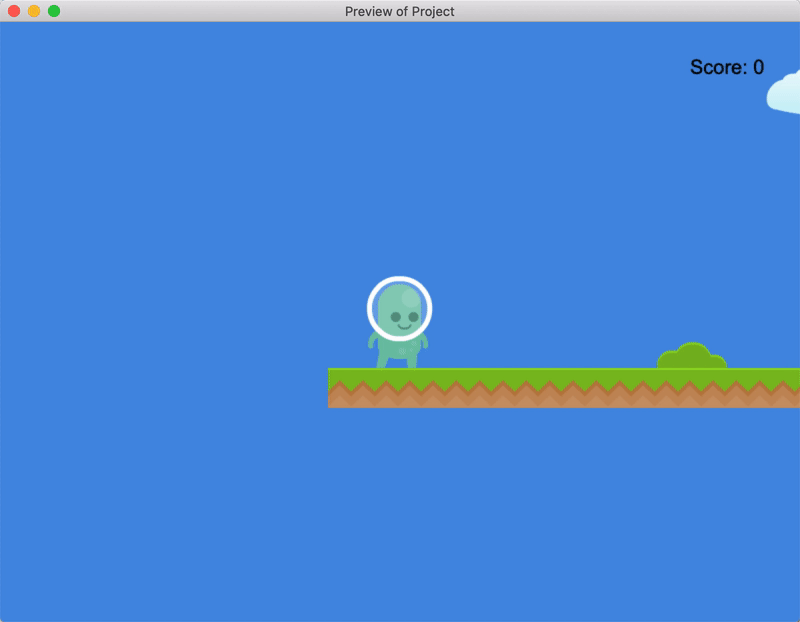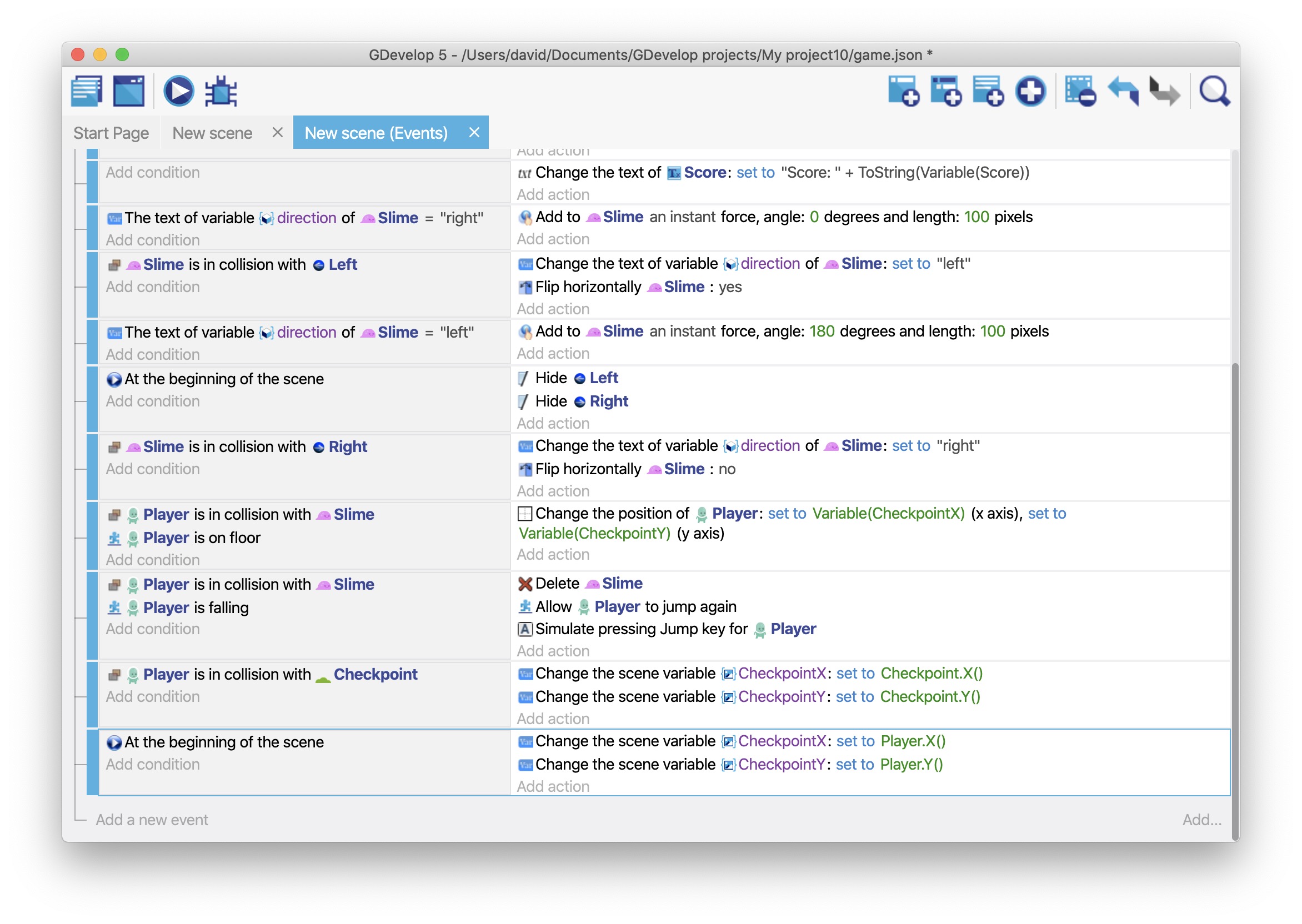Add Checkpoints to the Game
This part of the tutorial explains how to add checkpoints to the game. Then, when the player dies, they'll be sent to the most recent checkpoint.
Series
You are reading Part 8 of the Platformer Tutorial.
- Part 1: Getting started
- Part 2: Create a Playable Character
- Part 3: Create Platforms
- Part 4: Animate the Playable Character
- Part 5: Add Collectible Coins to the Game
- Part 6: Add Enemies to the Game
- Part 7: Make Enemies Kill the Player (and the Player Kill the Enemies)
- Part 8: Add Checkpoints to the Game
Step 1: Create an object for the checkpoint
The first step is to create a "Checkpoint" object. By this point in the tutorial, this should be a familiar process. If you need a refresher though, refer to Objects.
To create an object for the checkpoint:
- Create a Sprite object named "Checkpoint".
- Use the "bush.png" asset as the image for the checkpoint.
- Drag one or more instances of the object into the scene.
Step 2: Save the player's coordinates when they reach a checkpoint
When the player reaches a checkpoint, you can use variables to save the coordinates of that checkpoint. Then, when the player dies, you can send them back to those coordinates.
You can access the X and Y coordinates of an object with the following syntax:
ObjectName.X()
ObjectName.Y()
These statements are both examples of expressions.
To save the coordinates of the "Player" object when they reach a checkpoint:
- Create a new event.
- Create a Collision condition that checks if the "Player" object has collided with the "Checkpoint" object.
- Create a Value of a scene variable action that creates a "CheckpointX" variable with a value of
Checkpoint.X(). - Create a Value of a scene variable action that creates a "CheckpointY" variable with a value of
Checkpoint.Y().

Step 3: Send the player to the previous checkpoint
When the "Player" object collides with the "Slime" object, the Delete an object action deletes the "Player" object from the scene. But since the game has checkpoints now, it doesn't make sense to delete the "Player" object.
To send the "Player" object back to the previous checkpoint:
- Remove the Delete an object action.
- Create a Position of an object action for the "Player" object.
- For each of the Modification's sign fields, select = (set to).
- Set the X position coordinate to
Variable(CheckpointX). - Set the Y position coordinate to
Variable(CheckpointY).

If you preview the game, dying after reaching a checkpoint sends you back to the checkpoint.

Step 4: Set the player's default coordinates
The CheckpointX and CheckpointY variables don't exist until the player reaches a checkpoint, so if a player dies before reaching a checkpoint, GDevelop sends the player back to the default coordinates of "0,0".
This may cause a problem if:
- Something else exists at the default coordinates (such as an enemy).
- There isn't a platform beneath the default coordinates.
To fix this, set the value of the CheckpointX and CheckpointY variables to the initial coordinates of the "Player" object. Then the default coordinates are defined by where you place the "Player" object in the Scene editor.
To set the default coordinates:
- Create a new event.
- Add the At the beginning of the scene condition to the event.
- Create a Value of a scene variable action that creates a "CheckpointX" variable with a value of
Player.X(). - Create a Value of a scene variable action that creates a "CheckpointY" variable with a value of
Player.Y().

Next steps
You've reached the end of this tutorial. Congratulations!
From here, either dive into another tutorial, such as the Geometry Monster tutorial, or continue playing around with your platforming game. Based on what you've learned, how unique can you make it?